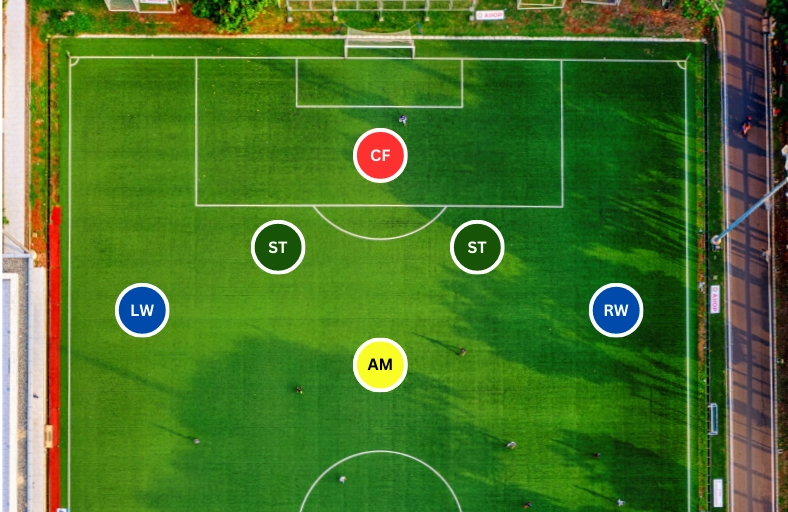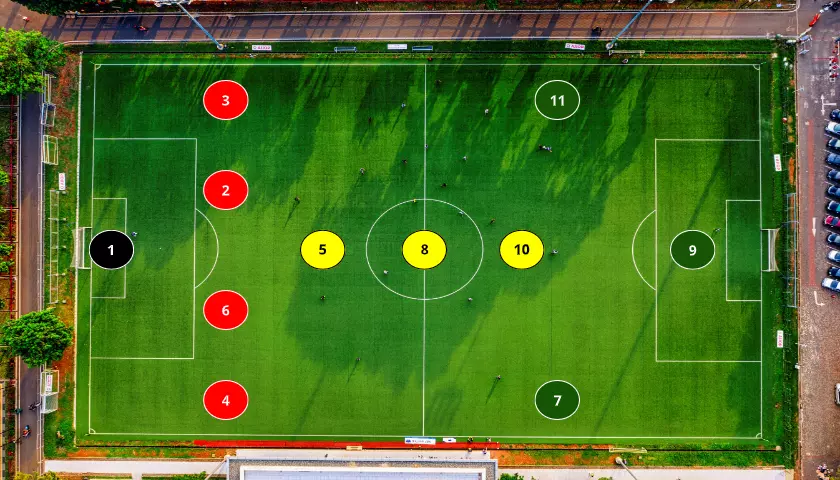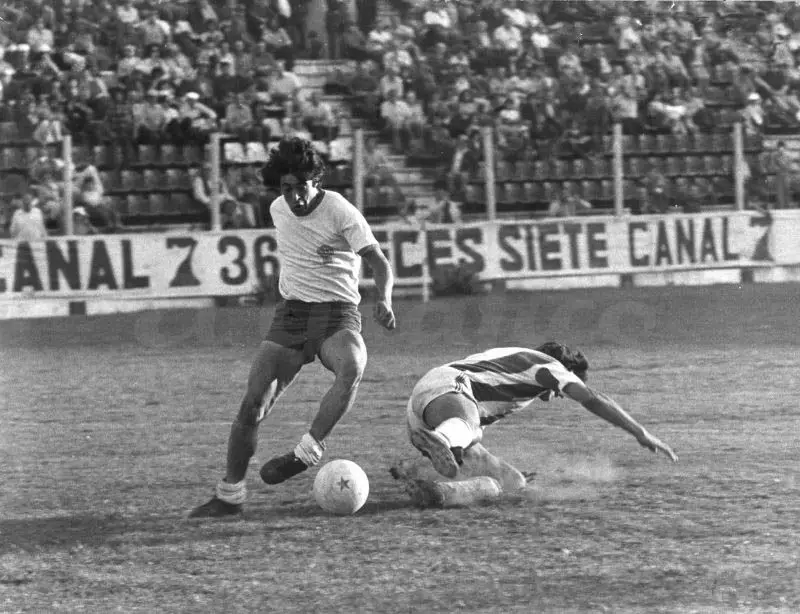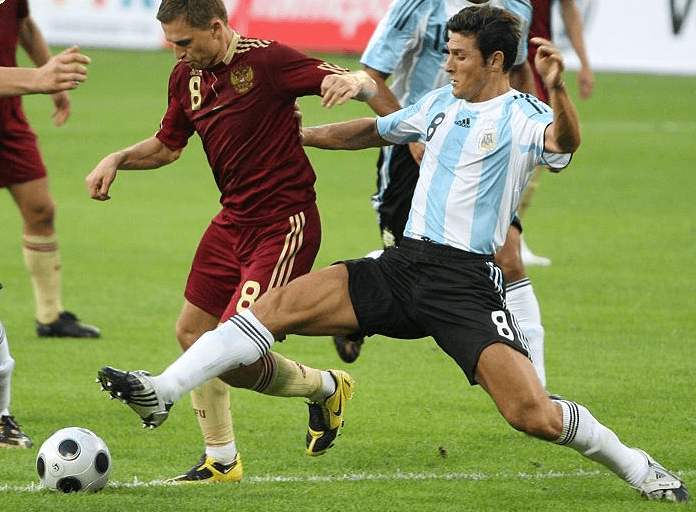Striker or Winger: What's the Difference?

Many football fans confuse both roles because famous professional players can easily play as a striker or winger. We have explained all football positions in a previous post; in this post, we will focus on the differences between strikers and wingers in football.
The key difference between strikers and wingers is their positioning on the pitch and their primary role. Strikers operate in a central position, primarily aiming to score goals. Wingers use the flanks and aim to provide width to the team’s attack and create scoring opportunities.
Another critical factor in distinguishing between strikers and wingers is their physical attributes. Strikers are usually taller and more muscular than wingers. This is because they need to hold off opposing defenders and win aerial duels. In contrast, wingers are generally shorter and more agile, with better acceleration and dribbling ability. This allows them to beat defenders with speed and skill and create space for themselves and their teammates.
Keep reading for more details on each role.
What is a striker?
Strikers are players whose primary responsibility is to score goals. They are also known as forwards and play closest to the opposing team’s goal. Strikers are usually the most skilled and prolific goal-scorers on a team. They are expected to have good ball control, shooting accuracy, and the ability to create opportunities for themselves and their teammates.
In addition to scoring goals, strikers have other responsibilities. A key role is to hold up the ball and bring their teammates into play. Therefore, strikers must have good physical strength and be able to resist the challenges of opposing defenders. They also need to have a good understanding of the game, be able to read it and make intelligent runs into space to create scoring opportunities.
Defensive contribution is also an essential part of a striker’s role. Strikers must press the opposition defenders to help win back possession when their team loses the ball. This requires good stamina, work rate, and the ability to read the game and anticipate the opposition’s movements.
There are different types of strikers in football. The target man, poacher, false nine, and complete forward are some of the common types of strikers. The target man, often known as Center Forward, is a physical player who is good in the air and can hold up the ball to bring his teammates into play. The poacher is a striker who is always in the right place at the right time to score goals. The false nine is a player who drops deep to create space for his teammates and confuse opposing defenders. The complete forward is a striker who is good at everything, from scoring goals to holding up the ball and creating opportunities for his teammates.
What is a winger?
Wingers, also known as wide midfielders, are players who operate on the flanks of the pitch. Their role provides width to the team’s attack by hugging the touchline and stretching the opposition’s defence. Their primary responsibility is to deliver accurate crosses into the box, creating goal-scoring opportunities for their teammates.
One of the key attributes of a successful winger is speed. Wingers are typically some of the fastest players on the team, using their pace to beat defenders and get in behind the opposition’s back line. This allows them to create space for themselves and their teammates and put the defence under pressure. Wingers also need good dribbling skills to get past defenders, allowing them to cut inside, deliver accurate crosses, or take shots at goal.
Another essential skill for wingers is the ability to deliver accurate crosses. Crossing is a difficult skill to master, requiring precision and timing. Wingers need to be able to put the ball in the right place at the right time to give their teammates the best chance of scoring. They often do this by whipping the ball into the box with pace and curl or chipping it over the defenders. Therefore, accuracy is also important, as a poorly delivered cross can waste a good attacking opportunity.
In addition to attacking responsibilities, wingers also need to contribute defensively. When the team loses possession, wingers are expected to track back and help defend, preventing the opposition from launching counter-attacks. This requires good stamina and work rate, as wingers must cover a lot of ground during a game. They also need to be able to read the game well, anticipating the opposition’s movements and positioning themselves accordingly.
Formations that combine wingers and strikers
The role of strikers and wingers in football has evolved over the years. The 4-3-3 and 4-2-3-1 formations are examples of modern tactical systems that have changed the roles of strikers and wingers.
The 4-3-3 formation typically consists of one central striker and two wingers who play in advanced wide positions. The central striker leads the attack, creates space for themselves and others, and scores goals. On the other hand, the wingers are responsible for providing width to the attack, stretching the opposition’s defence, and delivering crosses into the box. This formation allows the team to create more scoring opportunities but leaves the defence vulnerable to counter-attacks.
In contrast, the 4-2-3-1 formation is more defensive, with the wingers playing a more defensive role and the central striker operating as a lone forward. This formation has one striker and three attacking midfielders, with two central midfielders behind them. The wingers in this formation are often asked to come inside and support the striker, while the attacking midfielders provide the creativity and link-up play. This formation requires a striker who can hold up the ball and bring others into play and wingers who can come inside, shoot, and provide crosses from out wide.
In conclusion, while both positions are responsible for creating scoring opportunities, their roles and responsibilities differ significantly. Strikers operate in a central position and are responsible for scoring goals. In contrast, wingers operate on the flanks and create width and deliver accurate crosses into the box. Understanding the difference between strikers and wingers is crucial to develop more effective tactics and strategies.



